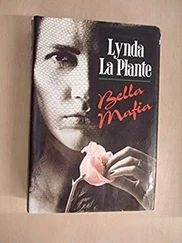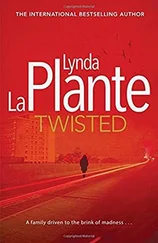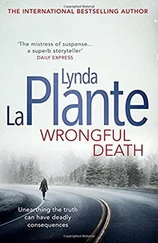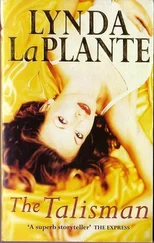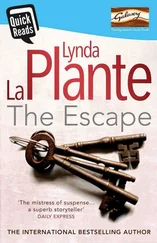She started to cry again, on the verge of blurting out why she was there, when Margaret interrupted.
‘I’ve had many friends. I have shut them out of my life. I think seeing so many of them at the party has just made it even more unbearable.’
‘Why are you hiding yourself out here?’
Barbara wished she hadn’t asked, as immediately Margaret tensed.
‘If I was to tell you, you would not believe it.’
‘Why don’t you try? I’m a very good listener.’
Margaret gave a false laugh and rose from the table, stumbling.
‘Whoops. I’ve had too much to drink. I need to go to bed. You will be all right sleeping down here again, won’t you?’
‘Of course. Leave all this to me.’
As Barbara cleared the table, Margaret paused and gave a sad smile before leaving the room.
Barbara began washing the dishes and stacking them on the draining board. It was still only eight o’clock. When she tried to find a programme on the radio it was full of static. She had finished the bottle of wine and was looking for something to read when Margaret walked in with a quilted dressing gown and a white cotton nightdress. Barbara jumped with fright.
‘It’s Victorian,’ Margaret said. ‘I used to collect them.’
She was wearing a similar high-necked nightdress, with an old velvet dressing gown.
In strained tones Margaret went on, ‘Don’t worry if you hear noises. This old house creaks and groans, and with the snow on the roof you’ll hear the pipes banging. If the snow melts, you’ll hear it falling from the gutters. The generator is ancient and the lights often fail, so you might need these candles.’
Margaret had lit two candles in carved wooden candlesticks. Rattling a box of matches, she placed them on the table.
‘Sometimes the house seems to have a mind all of its own.’
Barbara felt uneasy and asked Margaret not to lock the kitchen door in case she needed to use the bathroom. Margaret turned and paused. ‘If you stay in the kitchen you’ll be all right.’
Then she was gone.
Disturbed by this odd behaviour, Barbara was even more certain that there was someone else upstairs. The kitchen was warm, the fire was blazing, but the big room was full of shadows and strange shapes.
She washed her face in the kitchen sink, cleaned her teeth and changed into the nightdress. She was unfolding the blanket when she heard footsteps.
She expected Margaret to walk in, but nothing happened. She crossed the room and listened, easing the door open a fraction. It was pitch dark in the hall and there was a blast of freezing air. The further she opened the door, the colder it felt. By taking one small step into the hallway she could see that the front door was wide open.
Margaret was coming in. She had on a long cloak with a fur-lined hood and looked very angry. Afraid that she would be seen, Barbara pulled the door shut. She stayed by the fire for almost half an hour. Then she simply had to go and have a look.
The house was silent. By the light of the candle, Barbara crept out into the hall and went to the window by the front door. She peeked out. Another soft flurry of snow was sweeping over the driveway. Just as she was turning away she saw something that chilled her.
Footprints were plainly visible: not one set, but two. One was larger than the other. They were quite clear. Two people had been walking side by side. The prints led to a little snowman, about a foot high, with pebbles for eyes and a button for a nose.
‘I was right. There is someone else in the house,’ she whispered.
Barbara hurried back to the kitchen. She left the candle burning as she thought about what she’d seen. Had Margaret had a child, one that was sick and needed to be locked up? Was this what she was so afraid of anyone finding out?
Barbara could feel herself dozing. She’d had a lot to drink. Why hadn’t she brought her laptop, or anything on which she could write down what was happening? She really wanted to talk to her editor. This would make a fascinating article.
She fell into a deep sleep dreaming about her successful series, ‘Where Are They Now?’. It featured sad, lonely Margaret Reynolds, who was destined to live out her life as a recluse to care for a sick child.
It was midnight and the kitchen was dark. From the dying embers of the fire came shadows that made eerie shapes on the walls.
The sound of a piano being played very badly woke her. Tink-tink-tink. Then there was the sound of the lid being banged shut. Next came the light running footsteps, like a child’s. This was followed by Margaret’s voice, muffled and indistinct, obviously having a conversation.
Barbara could hear a nursery rhyme, ‘Three Blind Mice’, repeated over and over again. She decided that she would go upstairs and see for herself.
She put on the dressing gown. Lighting her candle, she silently eased open the kitchen door. She crept along the hall and made her way upstairs. There was no sign of Margaret. She tried one of the other doors that had been locked. This time it opened.
A child’s bedroom was painted pink, with a pink duvet and pillows. Nothing frightening whatsoever. The pink-and-white wardrobe was filled with velvet party frocks, patent-leather shoes, kilts and sweaters and blouses. Hats, coats and more shoes were lined up on one side.
Barbara had to hold her cupped hand to the flame, afraid it would splutter out or drip wax. She quietly closed the door, then froze. From above on the second floor she heard the same light footsteps. Someone hopping and skipping and then Margaret’s voice, clearly this time.
‘Stop it! Now just behave. You have to practise. I mean it, so do as I ask. DON’T TRY TO GET OUT! STOP IT! STOP IT!’
Barbara was afraid to go up to the next floor. The candle flame was low. It had burned right down to the rim of the candlestick.
The sound of the piano started again. Now it was even louder, as a duet began. ‘Chopsticks’. Margaret must be playing too. Then came clapping and Margaret saying, ‘Good. Very good. Now practise some more.’
Barbara made her way downstairs. She looked into the large drawing room with all the drapes over the furniture. She moved to the mantelpiece and held up the low flame of the candle to see better. There was a portrait above the fireplace, obviously of Margaret’s sister. She had one hand resting on the arm of a chair. The other held the hand of a small child who wore a white muslin dress. She had flaxen hair in lovely natural curls.
Holding the candle closer, Barbara tried to see the girl’s face, only to almost drop the candlestick in shock. There was no face, just a shape of where it had been. Someone had painted it out.
The flame wavered and died as Barbara crept back to the kitchen, her heart thudding. She stacked up more logs to create a blaze, but her feet were freezing cold and she felt chilled to the bone. It was so cold she eventually took the cushions off the sofa and piled them in front of the fire.
Barbara woke with a start, her heart pounding. Margaret was rattling the grate and clearing out the ashes.
‘You were dead to the world,’ she said, smiling.
Barbara felt stiff all over and moaned as she stretched.
‘Is your ankle hurting you?’
‘Er, no. It’s much better. Just a bit of cramp.’
‘That’s good. You do have a little bruise on your forehead.’
She touched Barbara’s face gently, then brightly suggested they have some bacon and eggs.
‘It’s stopped snowing and the sun looks as if it might come out,’ she continued, sounding very happy.
Eating a full breakfast even though she didn’t want it, Barbara was sure the ‘happy’ act was exactly that. Margaret looked tired, with dark circles beneath her eyes, and she was very pale. She hardly ate anything but chatted about how she wouldn’t be able to function without her precious gas-fuelled Aga.
Читать дальше


